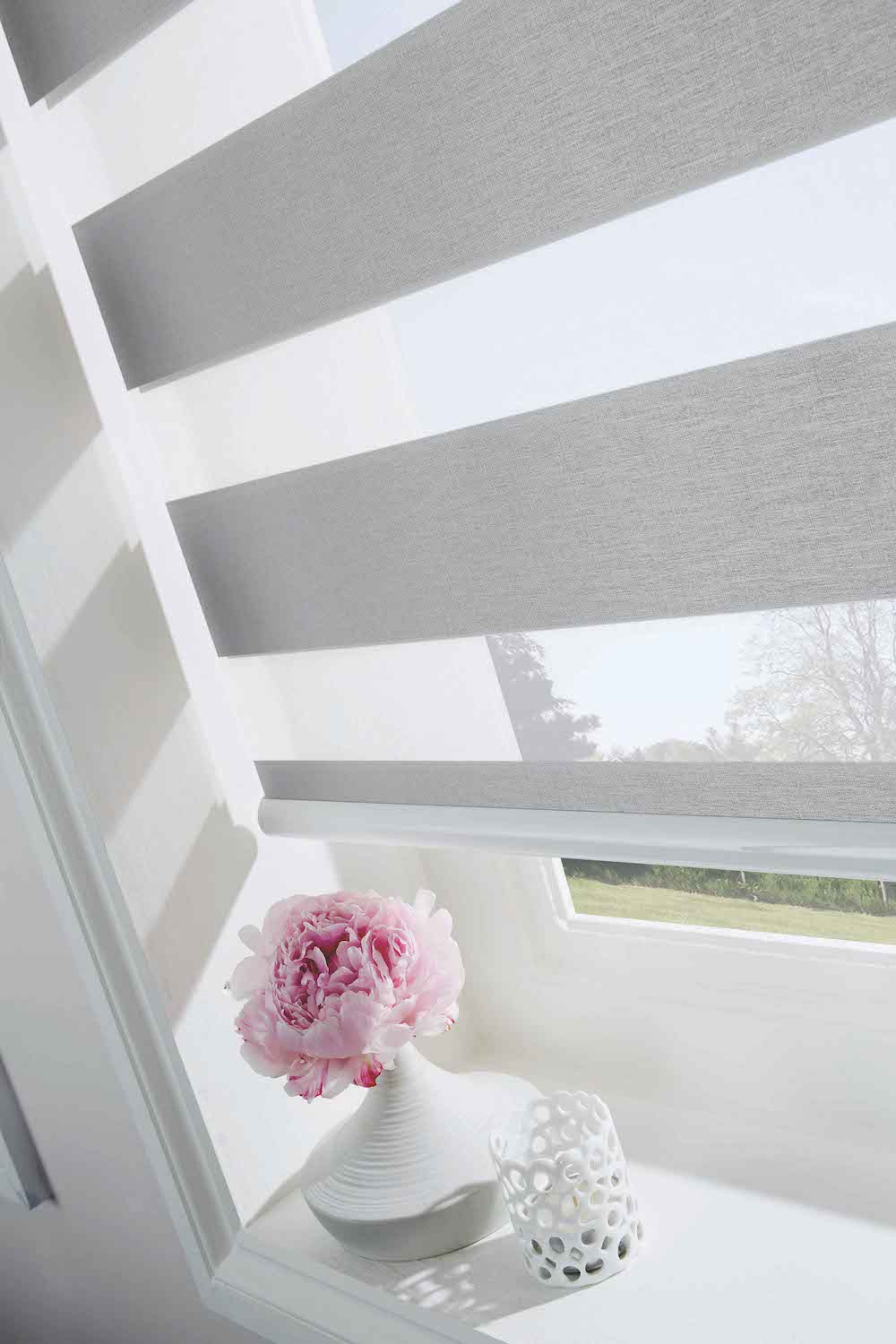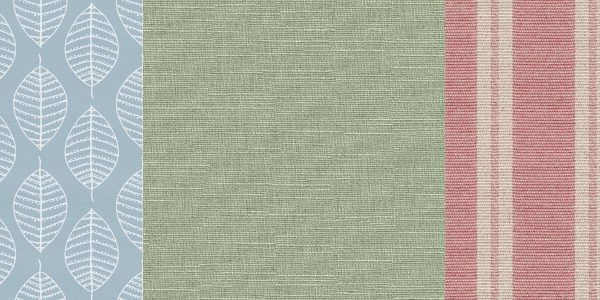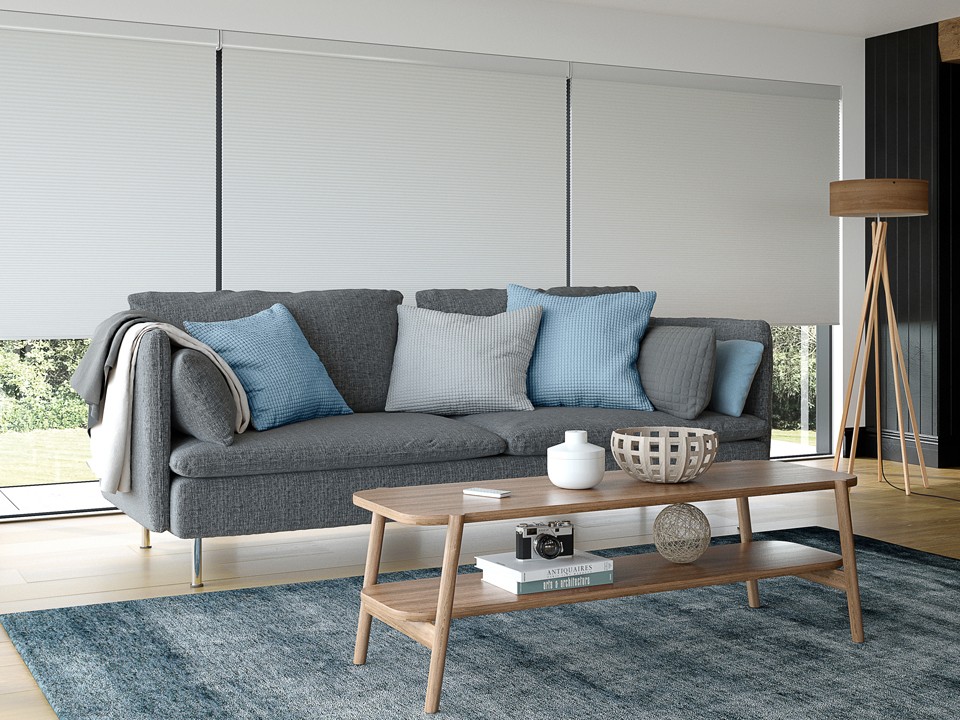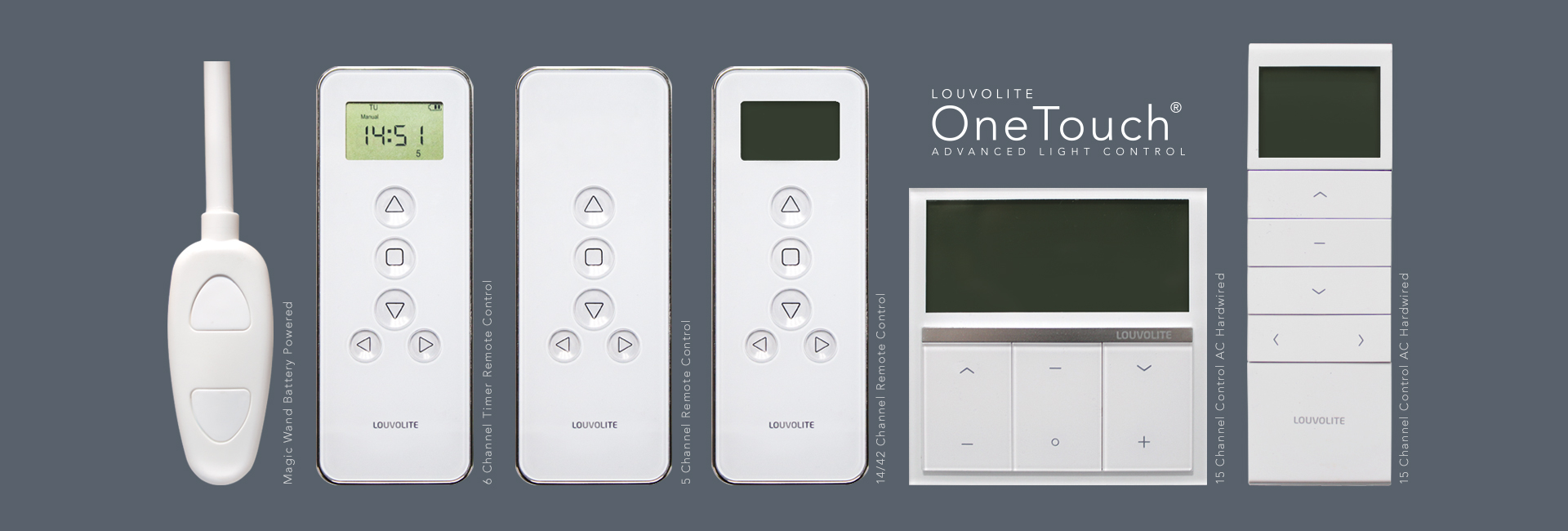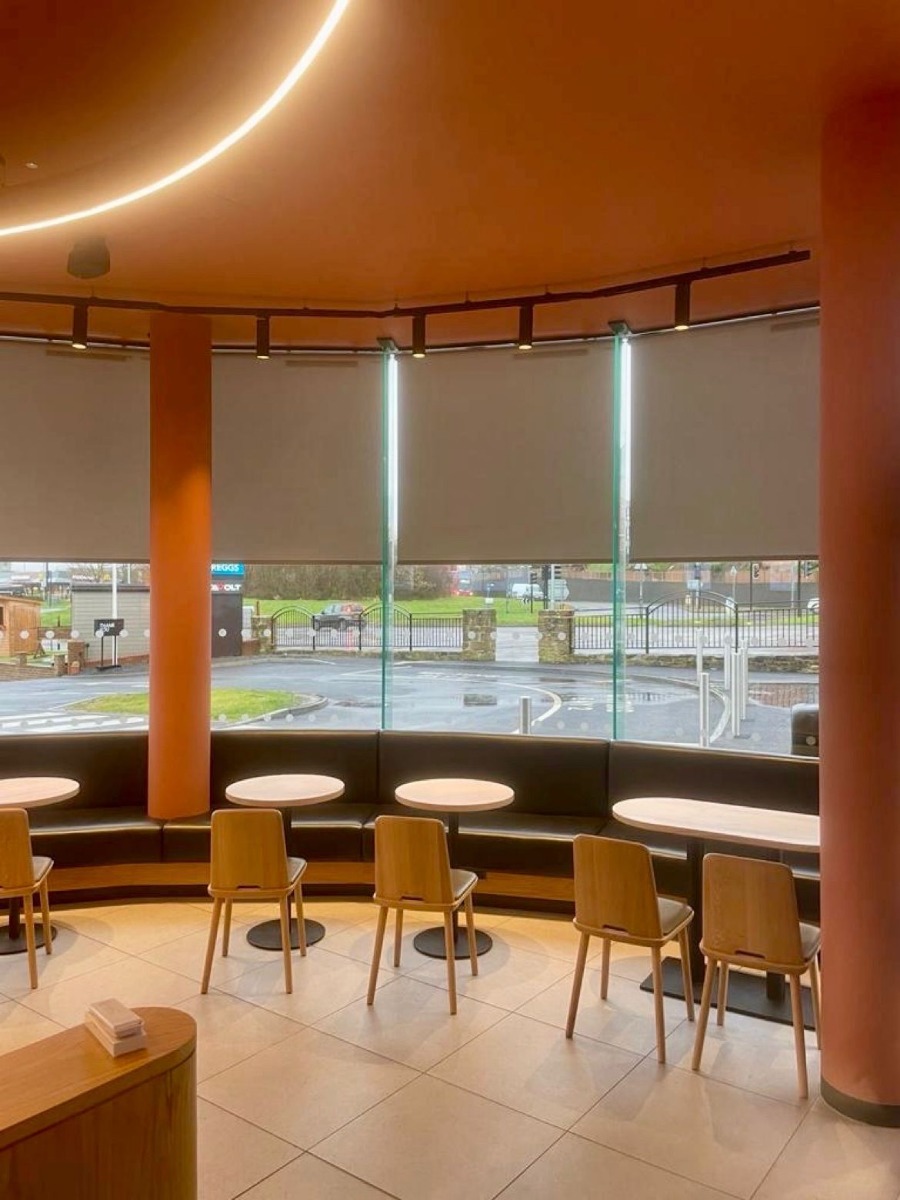Vision blinds are the perfect middle-ground between Roller blinds and Venetian blinds. They’re sometimes known as Day and Night blinds, and sometimes they’re known as Zebra blinds! Either way, they’re all the same.
Vision blinds have become extremely popular in modern-day interior design. This is thanks to their modern look and functional benefits. They’re a win, win when it comes to window dressings!
What Are Vision Blinds Made Of?
Vision blinds consist of a double layer of striped fabrics. The fabrics are made up of opaque coloured stripes followed by sheer stripes. These two fabrics glide over each other, either lining up the stripes or colour blocking them, granting the user fantastic light and privacy control.
Like a standard roller blind, Vision blinds are operated by a control chain at the side, making it simple and easy for you to adjust. They can be completely rolled up, or, like a Venetian blind, can be adjusted to filter light through their stripes.
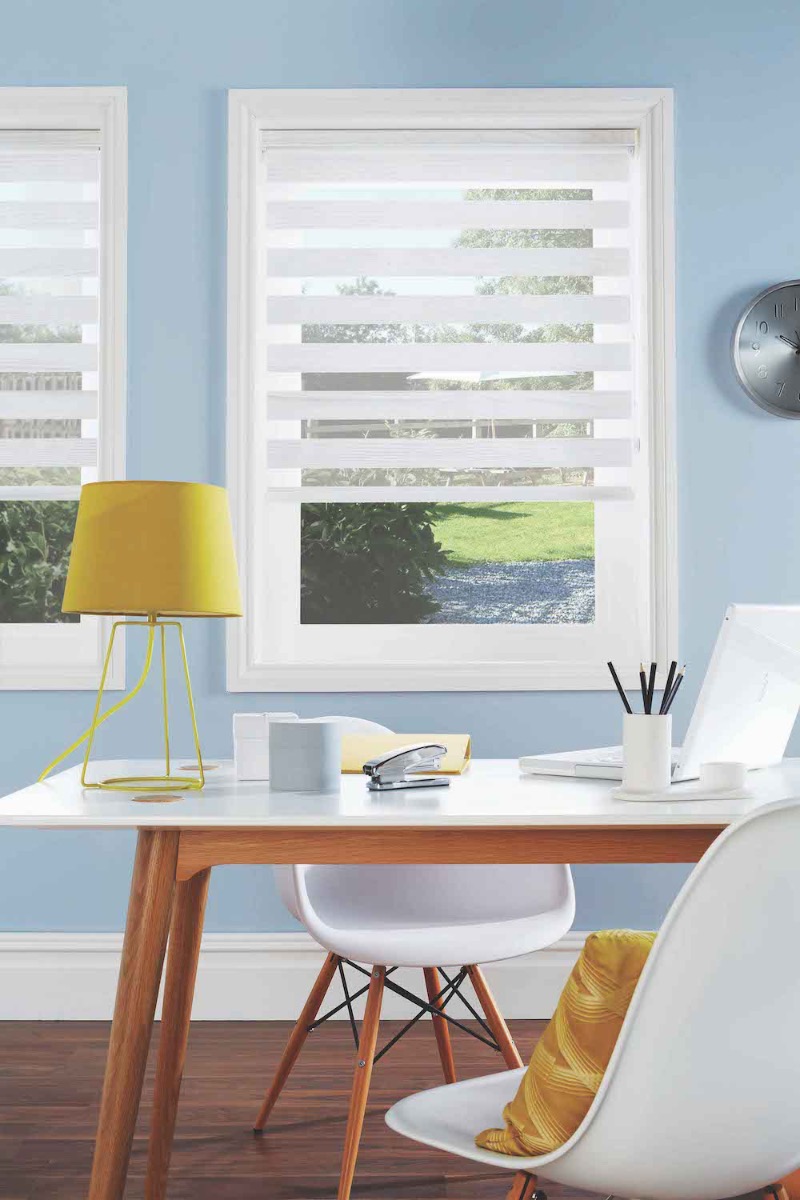
What Styles of Vision Blinds Are Available?
Vision blinds come in a striped fabric as standard. This is what makes them Vision blinds! However, that doesn’t mean there aren’t still lots of designs for you to choose from!
We have Vision blinds in a range of neutral tones from timeless whites to cosy creams. As well as your bolder colours including statement blacks, vibrant reds, and bright pinks. There’s a Vision blind to match every colour scheme whether you’re into minimalist or maximalist interiors!
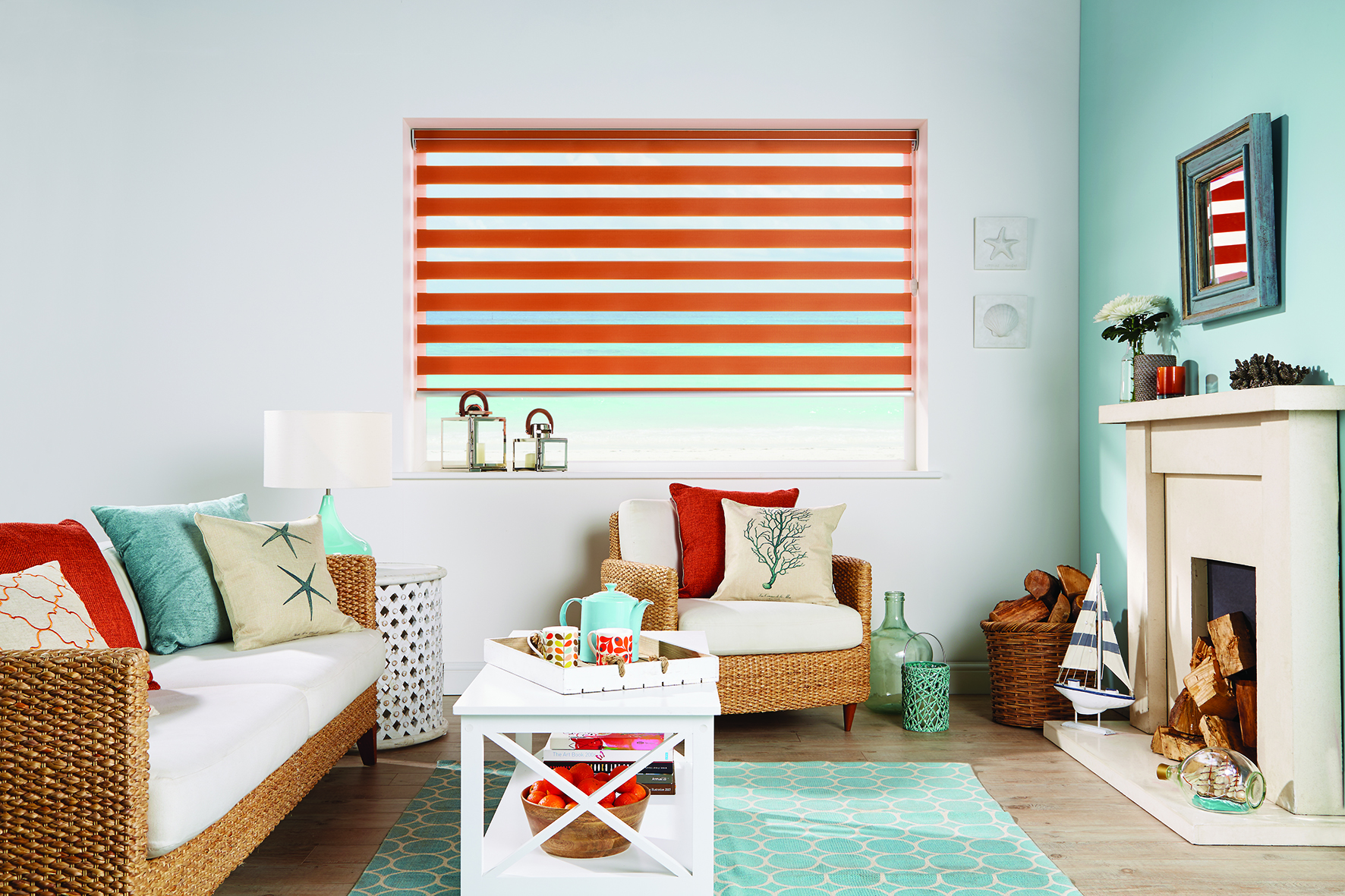
Vision Blinds with Motorisation
By now, you’ll know that Vision blinds are a modern and inventive window dressing. But they get better. Motorised Vision blinds!
With motorised vision blinds, you can operate your blinds without having to get up! Instead, simply click the button on your rechargeable remote, then watch your blind glide up or down as you please! Motorised Vision blinds are super easy to set up and you can do so at home, yourself.
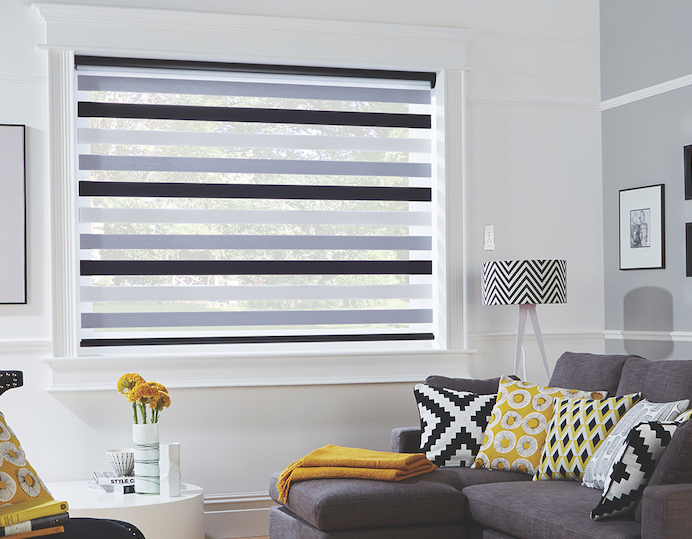
Where Do Vision Blinds Work Best?
Vision blinds are great across every room in the home thanks to their simple and modern design. Here’s why…
Bedroom Vision Blinds
You might think flexible light and privacy control aren’t important in the bedroom. It just needs to be dark for sleeping, right? Wrong! Think about it, you probably get changed in your bedroom. You might have a workstation in there or a play area for the kids.
Therefore, flexibility when it comes to light and privacy is most likely essential in the bedroom.
This is where Vision blinds are perfect. By filtering the light but maintaining privacy, you can enjoy the natural daylight whilst getting on with day-to-day tasks in private!
Living Room Vision Blinds
The perfect blind to bring some style to your living space, Vision blinds come in a fantastic range of colours, so you can enjoy beautiful blinds no matter what your décor!
The functional characteristics of Vision blinds will help you to make the most out of your living room, no matter what time of day. Close them completely for Saturday movie nights, then open them to stripes during the day to relax in private!
Kitchen Vision Blinds
Kitchens are spaces we spend lots of time in, probably more than we realise! Therefore, having the right blinds in your kitchen is important! Vision blinds are a popular choice for the kitchen thanks to their modern aesthetic.
Achieve the perfect balance between daylight and privacy. Set the blinds to stripes whilst you cooking and when it comes to relaxing, alter them to a full-colour block for complete privacy.

What Are the Benefits of Vision Blinds?
– You get complete privacy in your home when you fully close Vision blinds.
– Their clever design enables you to enjoy natural daylight whilst also benefiting from complete privacy.
– You can choose to have the blinds fully open, fully closed, or position them somewhere in-between.
– Vision blinds are available in a range of fabrics and colours, with the option of motorisation available too. They’re a go-to window dressing for making a statement within any room in the home!
– Benefit from improved insulation when you opt for made to measure Vision blinds. They’ll help to keep your home warm in winter and reflect the heat during the summer.
Could Vision blinds be for you? If so, why not order 5 free samples from our website and let us help you to decide! Simply head to the product page and add the sample to your basket. Then, all that’s left to do is decide which colour is for you. Browse our Vision blinds and get started today.
If you’re not quite sold on Vision blinds, we have hundreds of other blinds available. From Roller Blinds, Vertical Blinds, Pleated Blinds, Venetian Blinds and more! Find your perfect style on our website today.

